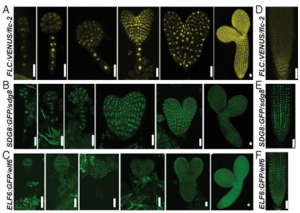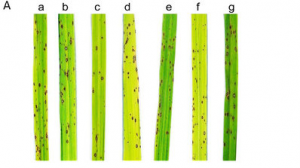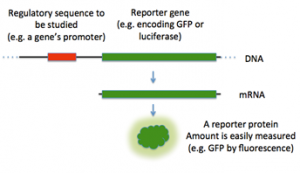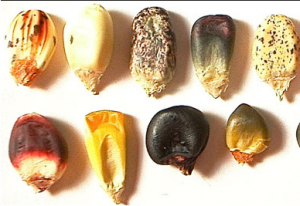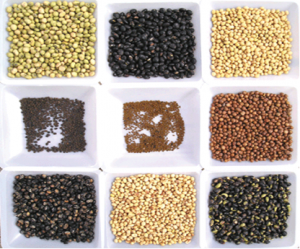Ethnic divides play a major role in many armed conflicts around the world and might serve as predetermined conflict lines following rapidly emerging societal tensions arising from disruptive events like natural disasters. We find evidence in global datasets that risk of armed-conflict outbreak is enhanced by climate-related disaster occurrence in ethnically fractionalized countries.
Breeding efforts have focused on improving agronomic traits of the cassava plant however little research has been done to enhance the crop palatability. This review investigates the links between cassava traits and end-user preference in relation with sensory characteristics. The main trait is starch and its composition related to the textural properties of the food. Pectin degradation during cooking resulted in increased mealiness.
The transcription factor FAR-RED ELONGATED HYPOCOTYL3 (FHY3) is known to play multiple roles at the vegetative stage in Arabidopsis, but its functions in reproductive stage are unclear. We find that FHY3 is required for floral meristem determinacy and shoot apical meristem maintenance by mainly acting as a transcriptional repressor.
How chromatin influences transcription is a major question in biology. Chromatin states and transcriptional activity are correlated, but the interconnections and feedbacks in chromatin regulation that lead to quantitative transcriptional regulation are poorly understood. Previous mathematical modeling has shown the importance of dynamic, opposing histone modifications to enable maintenance of one chromatin state through many cell divisions,
Calpains are ubiquitous and well-conserved proteins that belong to the calcium-dependent, non-lysosomal cysteine protease family. In this study, 8 putative calpains were identified using Pfam domain analysis and BlastP searches in M. oryzae. Three single gene deletion mutants (ΔMocapn7, ΔMocapn9 and ΔMocapn14) and two double gene deletion mutants (ΔMocapn4ΔMocapn7 and ΔMocapn9ΔMocapn7)
Coilin is a marker protein for subnuclear organelles known as Cajal bodies, which are sites of various RNA metabolic processes including the biogenesis of spliceosomal small nuclear ribonucleoprotein particles. Through self-associations and interactions with other proteins and RNA, coilin provides a structural scaffold for Cajal body formation. However, despite a conspicuous presence in Cajal bodies, most coilin is dispersed in the nucleoplasm and expressed in cell types that lack these organelles.
DNA methylation in plants is found at CG, CHG, and CHH sequence contexts. In plants, CG DNA methylation is enriched in the transcribed regions of many constitutively expressed genes (gene body methylation; gbM) and shows correlations with several chromatin modifications. Contrary to other types of DNA methylation, the evolution and function of gbM are largely unknown. Here we show two independent concomitant losses of the DNA methyltransferase CHROMOMETHYLASE 3 (CMT3) and gbM without the predicted disruption of transcription and of modifications to chromatin.
To better understand maize endosperm filling and maturation, we used γ-irradiation of the B73 maize reference line to generate mutants with opaque endosperm and reduced kernel fill phenotypes, and created a population of 1788 lines including 39 Mo17 × F2s showing stable, segregating, and viable kernel phenotypes. For molecular characterization of the mutants, we developed a novel functional genomics platform that combined bulked segregant RNA and exome sequencing (BSREx-seq) to map causative mutations and identify candidate genes within mapping intervals.
ALD1 (ABERRANT GROWTH AND DEATH2 [AGD2]-LIKE DEFENSE1) is one of the key defense regulators in Arabidopsis thaliana and Nicotiana benthamiana. In these model plants, ALD1 is responsible for triggering basal defense response and systemic resistance against bacterial infection. As well ALD1 is involved in the production of pipecolic acid and an unidentified compound(s) for systemic resistance and priming syndrome, respectively.
The identification and mobilization of useful genetic variation from germplasm banks for use in breeding programs is critical for future genetic gain and protection against crop pests. Plummeting costs of next-generation sequencing and genotyping is revolutionizing the way in which researchers and breeders interface with plant germplasm collections. An example of this is the high density genotyping of the entire USDA Soybean Germplasm Collection


 Curently online :
Curently online :
 Total visitors :
Total visitors :



